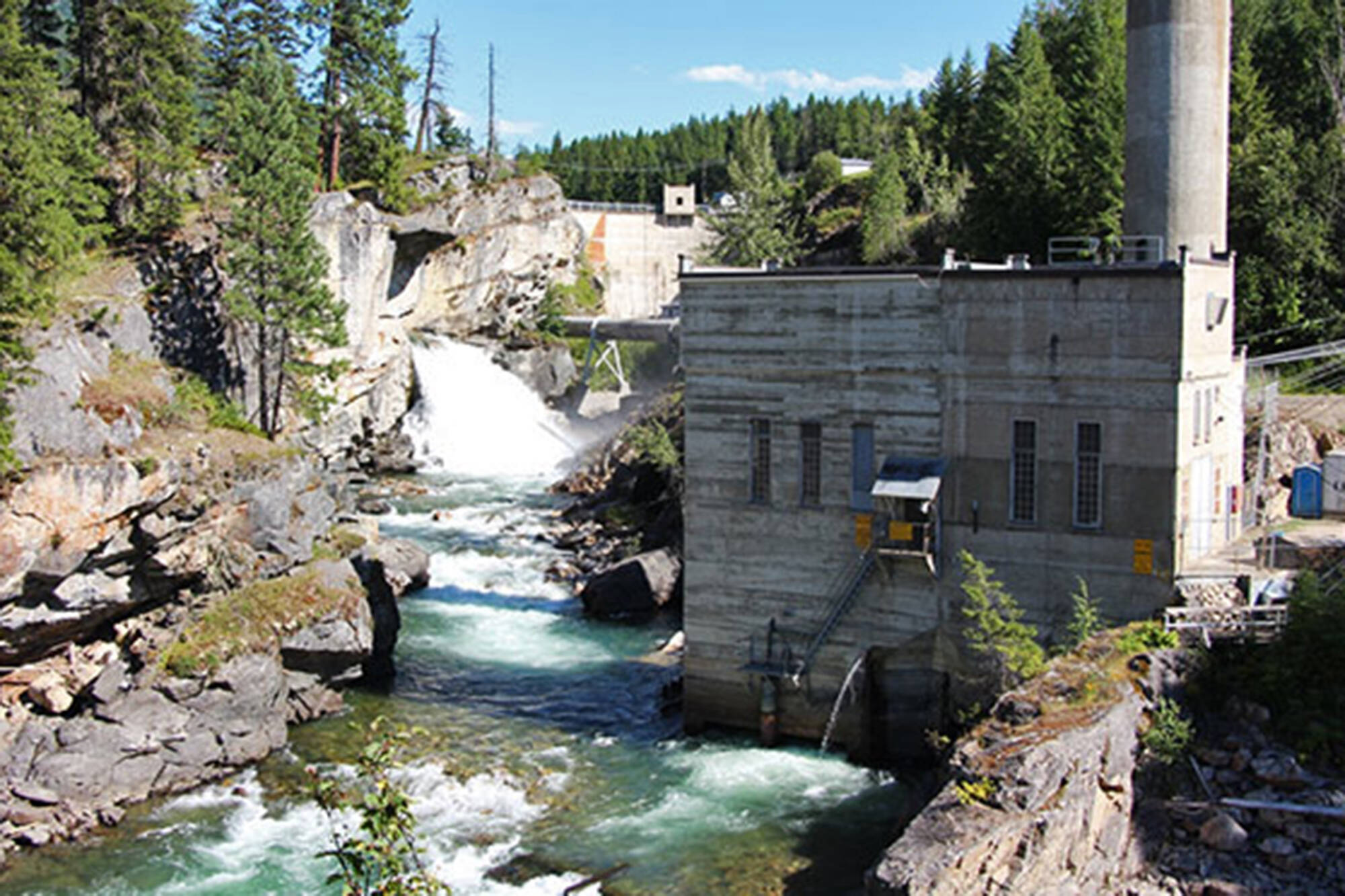Plans to decommission a dam and power station along the Shuswap River and improve fish access are being criticized by the Splatsin First Nation over lack of consent and territorial concerns.
On Sept. 20, BC Hydro announced it would be decommissioning the Wilsey Dam and Shuswap Falls Powerhouse near Lumby, and restoring the river to its original channel for spawning salmon.
The facility, built in 1929, represents less than one per cent of BC Hydro’s generating capacity.
BC Hydro said it explored two options to restore fish passage. The first involved refurbishing the aging facility and build a fishway channel. The second was removing the dam and powerhouse.
“After careful consideration and working closely with Indigenous groups and stakeholders to better understand their perspectives and input, BC Hydro has selected decommissioning the dam and powerhouse as the leading alternative,” explained BC Hydro spokesperson Jen Walker-Larsen in an email to the Observer.
“Decommissioning instead of refurbishing will return that portion of the river to its original channel and create river conditions more similar to what existed before the dam was built.”
On Sept. 23, after being contacted by the Observer, Splatsin issued a response to the BC Hydro announcement, stating the Crown corporation failed to get “free, prior and informed consent” from the band. Secwépemc Nation Tribal Chief and Splatsin Kukpi7 (Chief) Wayne Christian called the decision to decommission the dam “a complete disregard of BC Hydro’s mandate and our title and rights.”
Read more: Column: Restoration of watersheds, forests, is reconciliation
Read more: Splatsin opposes old-growth logging north of Revelstoke
“We [Splatsin and Pespesellkwe te Secwepemc] made an offer to BC Hydro to acquire the dam and turn it into a run-of-the-river system to recover the salmon population and generate power and economic opportunities at the same time,” said Christian. According to a Sept. 23 media release by the Splatsin, that offer was “promptly denied under the premise there are other Indigenous nations with whom BC Hydro has obligations to uphold.”
“However, communication from BC Hydro to Splatsin clearly acknowledges that the Wilsey Dam falls within the core territory of Splatsin and the Secwépemc Nation, and therefore, no other nations needed to be consulted,” reads the release.
Furthermore, Splatsin said after the BC Hydro announcement, the band learned Okanagan Nation Alliance (ONA) and the Okanagan Indian Band (OKIB) were consulted about the decommissioning.
“For BC Hydro to suggest and acknowledge that another nation, ONA or its member band OKIB, have title and rights to an area within Splatsin’s core area and within the Secwépemc Nation is unacceptable,” said Christian.
The Splatsin release notes that Shuswap Falls was considered a shared area between the Okanagan Indian Band and the Secwépemc Peoples.
“This agreement was for access to the Shuswap River fishery, as the Okanagan Fishery was very limited and did not support Salmon…,” reads the release. “When the dam was built, it forced the Okanagan to abandon their fishing grounds above the dam and fish alongside the Secwépemc below the falls.”
BC Hydro said the decision to decommission a facility rests with implications for the electrical system, power generation, operating and upgrade costs and environmental impacts.
“BC Hydro will continue to consult with the Okanagan Nation and Secwepemc and engage with local elected officials, key stakeholders and the public throughout the project,” said Walker-Larsen.
Responding to the BC Hydro announcement (prior to the Splatsin response), Shuswap Environmental Action Society president Jim Cooperman said the dam may have made sense when it was built in 1929. However, it became a liability many decades ago “due to the high maintenance cost of removing the sediment every four years that settles behind the dam.”
And, despite concerns around salmon stocks, promises to construct a fishladder were never followed through.
“We applaud the decision to remove the structure and restore the upstream salmon habitat, which has become a common practice in other jurisdictions where rivers have been set free,” said Cooperman.
lachlan@saobserver.netLike us on Facebook and follow us on Twitter
Sign up for our newsletter to get Salmon Arm stories in your inbox every morning.

